Bryan D. Brown
| Bryan D. Brown | |
|---|---|
 General Bryan D. Brown | |
| Nickname(s) | Doug |
| Born | October 20, 1948 |
| Allegiance |
|
| Service/branch |
|
| Years of service | 1966–2007 |
| Rank |
|
| Commands held |
U.S. Special Operations Command U.S. Army Special Operations Command Joint Special Operations Command 160th Special Operations Aviation Regiment |
| Battles/wars |
Vietnam War Operation Urgent Fury Operation Desert Storm Operation Enduring Freedom Operation Iraqi Freedom |
| Awards | See below |
Bryan Douglas "Doug" Brown (born October 20, 1948)[1] was a four-star United States Army general, who retired in 2007 after four decades of military service. In his final assignment, he served as the seventh commander of U.S. Special Operations Command (USSOCOM), from September 2, 2003 until July 9, 2007. As USSOCOM's commander, he was responsible for all unified special operations forces (SOF), both active duty and reserve.
Brown joined the United States Army in 1967 as a private in the infantry and after graduating from Special Forces Qualification Course, he became a Green Beret. Shortly afterwards he fought in the Vietnam War as part of a Special Forces "A" team. After returning from his combat tour he enrolled in Officer Candidate School and was commissioned as a second lieutenant in May 1970. After attending Army Aviation School he returned to Vietnam as a UH-1 helicopter pilot. After the Vietnam War he was part of a task force that would go on to later found the 160th Special Operations Aviation Regiment in 1981. During his stint in the 160th SOAR Brown took part in numerous contingency operations in the 1980s and early 1990s. In 1983 Brown participated in the invasion of Grenada where his unit became the first aviation unit to use night vision goggles in combat. In the late 1980s he led all U.S. forces assigned to Operation Prime Chance in the Persian Gulf amidst the Iran-Iraq War. Shortly thereafter he commanded a battalion within 160th SOAR during Operation Desert Storm; after which he was promoted to colonel and commander of the regiment. After leaving 160th SOAR Brown served at the helm of Joint Special Operations Command from 1998–2000 and then U.S. Army Special Operations Command from 2000–2002.
In 2002, Brown became the deputy commander of U.S. Special Operations Command and, holding the post until 2003 when he was selected to replace Air Force General Charles R. Holland as Commander of U.S. Special Operations Command. Shortly after becoming the head of USSOCOM, in 2004, he was involved in the aftermath of the Pat Tillman friendly fire incident which culminated when he testified before the congressional Committee on Oversight and Government Reform in 2007. Also during his tenure in command of USSOCOM he announced the creation of Marine Corps Forces Special Operations Command in 2006. Brown retired in 2007 after leading USSOCOM through four years of the Iraq War and War in Afghanistan.
Early life and family
Brown, a native of Fort Meade, Maryland, was born in 1948 and grew up in a military family.[2] His father, Arnett Brown, was a member of the 89th Infantry Division during World War II, who became a Command Sergeant Major and served in the Vietnam War. His mother was Mary Lou Brown.[3] Brown played baseball and basketball in high school, and eventually made it onto a semi-pro baseball team in Fayetteville, North Carolina. In a 2009 interview with The Year in Special Operations, he commented on his short-lived semi-pro baseball career, saying, "I played three games with them and found that life couldn’t be sustained on $3 per game". Losing interest in college, and with his father in Vietnam, he walked into a recruiting office and joined the Army as an infantryman.[4] He is married to Penelope "Penny" Brown (née Whightsil), a native of Fayetteville.[5][2] Together, they have two daughters and five grandchildren.[5][2]
Military service
Early military career and Vietnam
He entered the Army in 1966 as a private in the infantry. [6][7][4][8][9] While attending Airborne School at Fort Bragg in North Carolina, he signed up for Army Special Forces (SF) after meeting Army SF recruiters.[4] After Brown completed the Special Forces Qualification Course, he was assigned to the 7th Special Forces Group.[4] Shortly thereafter, he deployed to Vietnam as part of a Special Forces "A Team".[10][4] His interest in aviation started after returning to the United States from his tour in Vietnam. While at Mountain Ranger Camp, he became enthralled with helicopters after he was asked by a UH-1 helicopter pilot to assist him in conducting reconnaissance flight over northern Georgia.[4] Immediately afterwards, he signed up for Officer Candidate School (OCS) and flight school.[4] He graduated OCS in May 1970, obtaining a field artillery officer commission as a second lieutenant.[11][2] He was thereafter stationed at Camp Pelham, South Korea as part of the Headquarters and Headquarters Battery, 2/17th Field Artillery Regiment.[12]
Brown went on to earn his aviator badge in 1971 after attending Army Aviation School at Fort Rucker, Alabama.[5][11] After aviation school, he returned to Vietnam as a UH-1 helicopter pilot in the 129th Assault Helicopter Company.[4][12] He would go on to become the first member of the aviation branch to attain the rank of four-star general.[8] In June 1978, Brown was assigned to the 158th Aviation Battalion at Fort Campbell, Kentucky flying Sikorsky UH-60 Black Hawks.[11][13][4] While a member of the 158th Aviation Battalion Brown was a Company Commander.[4] The 158th Aviation Battalion was originally part of the 101st Aviation Group, the air arm of the 101st Airborne Division.[4]
Operation Credible Sport
In 1979, Iranian students seized the American embassy in Tehran and held the embassy staff hostage;[14] the first rescue operation, code-named Eagle Claw ended in failure due to equipment and coordination problems, culminating in the crash of a RH-53D Sea Stallion helicopter into a parked C-130 Hercules in the Iranian desert, killing eight servicemen.[15] A second rescue attempt, Operation Credible Sport, was ordered, and Brown was involved in planning and preparation.[11][4] The follow-up rescue included U.S. Air Force, U.S. Navy and Army assets. The Army units involved were the battalions that made up the 101st Aviation Group: the 158th Aviation Battalion, the 229th Aviation Battalion and the 159th Aviation Battalion.[11] All three battalions formed Task Force 158.[11] President Carter meanwhile appointed the former Chief of Naval Operations, Admiral James L. Holloway, III, to head a commission to study the deficiencies revealed by the failure of Eagle Claw. Among the presented findings was the fact that the military lacked aircraft and crews who were trained and prepared to perform these mission types.[16]
The Task Force began night flight training using night vision goggles (NVG) to develop nighttime extraction capabilities; however, they were doing so with AN/PVS-5 NVGs which were originally developed for ground forces.[4][11][16] Never before had anyone in the U.S. Department of Defense flown in NVGs and the Task Force quickly adapted the NVGs for flying and by Brown's own words "a warrant officer figured out we could cut them apart and mount them to our helmets and increase our efficiency and safety by a huge margin. So there we were, without authority, cutting up goggles and building our own NVGs."[4] Their nighttime training took place at Dugway Proving Ground, Utah.[4] As a result of the night vision goggle training Brown asserted in a 2011 interview that "most of today's NVG tactics, techniques, and procedures as well as Black Hawk and Chinook modifications came directly from that mission."[4] Ultimately Operation Credible Sport did not come to fruition due to a peaceful resolution to the crisis where the hostages were released as a result of long negotiations.[11][15]
160th SOAR
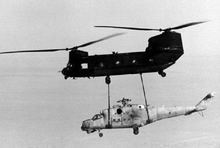
After Operation Credible Sport ended the Army leadership decided the unit was needed for future contingency operations.[16] Thusly, on October 16, 1981 Task Force 158 became the 160th Aviation Battalion,[16] with Brown a founding member.[4][8] The choice of the unit's name was accepted by the U.S. Army Institute of Heraldry as a logical progression of the 101st's 158th and 159th Battalions.[17] The 160th Aviation Battalion was later renamed the 160th Special Operations Aviation Group in 1986; it was not until 1990 when it would take on its current name, 160th Special Operations Aviation Regiment.[16][17] In October 1983, Brown participated in the invasion of Grenada, during which his unit became the first aviation unit to use night vision goggles in combat.[10][4] In the late 1980s, Brown led all U.S. forces assigned to Operation Prime Chance, which provided escort security for American-flagged Kuwaiti tankers during the Iran-Iraq War.[4] During Operation Prime Chance Brown's unit became the first aviation unit to engage in combat using night vision devices when they engaged an Iranian-flagged ship, Iran Ajr, that was seen deploying mines in the Persian Gulf.[18][17]
In 1988, he participated in Operation Mount Hope III, during which U.S. forces recovered a crashed Soviet-made Mi-24 Hind attack helicopter in Chad.[4] Company E of the 160th deployed to N'Djamena, Chad via C-5 Galaxy.[17] Once in Chad the company flew two CH-47 Chinooks 490 nautical miles at night, without the use of navigational aids, to the crash site.[17] Once at the crash site the crews harnessed the crashed Hind to a Chinook via sling-load.[17] During the returning flight both Chinooks performed an air-to-air refuel with a C-130; and later endured a sandstorm before returning with the Hind.[17]
During the Persian Gulf War in 1991, Brown commanded a battalion within 160th SOAR for both Operation Desert Shield and Operation Desert Storm.[10][13] Their missions during the operations included inserting and extracting Special Forces teams; resupplying SOF units; performing reconnaissance; and attacking pre-designated targets.[17] Brown became the third commanding officer of the Regiment after Desert Storm.[10][13]
General Officer
Between 1994 and 1996, Brown served as assistant division commander for maneuver, 1st Infantry Division (Mechanized), at Fort Riley, Kansas.[10] He later served as director of Plans, Policy and Strategic Assessments (J5/J7) at U.S. Special Operations Command.[10] As a lieutenant general, he commanded the Joint Special Operations Command (JSOC) from 1998–2000.[19] Brown went on to lead U.S. Army Special Operations Command (USASOC) from October 2000 to 2002.[20][2]
While at the helm of USASOC, Brown sought to modernize neglected aspects of Army special operations, mainly the civil affairs and psychological operations units.[4] By the time Brown left, he had increased USASOC's budget by 200 percent.[4] After leading all of the Army's special operations forces for two years, Brown was selected to become the Deputy Commander of U.S. Special Operations Command.[21] He held the position from 2002 until 2003 when he was nominated to take over U.S. Special Operations Command.[10]
Commander of USSOCOM

On September 2, 2003, Brown replaced Air Force General Charles R. Holland as the Commander of U.S. Special Operations Command.[10] During Brown's tenure as USSOCOM commander, he was involved in the aftermath of the Pat Tillman friendly fire incident that occurred in early 2004.[22] He testified before the congressional Committee on Oversight and Government Reform in 2007 about receiving a memo from Lt. Gen. Stanley McChrystal, then-commander of JSOC, informing Brown that it was "highly possible that Corporal Tillman was killed by friendly fire".[23][22] Ultimately, former commanding general of USASOC Lt. Gen. Philip Kensinger and other Army officers were held responsible for the mishandling of information surrounding Tillman's death.[24]
On November 23, 2005, Brown, together with U.S. Secretary of Defense Donald Rumsfeld, and Marine Corps Commandant General Michael Hagee announced the creation of the Marine Corps Forces Special Operations Command (MARSOC). Prior to the creation of MARSOC, the Marine Corps had not been involved in special operations, which were conducted by Army, Navy and Air Force units assigned to U.S. Special Operations Command. After the September 11 attacks, the Secretary of Defense had directed the Marine Corps and Brown's predecessor to work closer together in the Global War on Terror. This culminated in the creation of MCSOCOM Detachment One on June 19, 2003, shortly before Brown took command of USSOCOM. It was nearly three years later on February 24, 2006, when MARSOC was activated at Camp Lejeune, North Carolina.[25]
In 2006 Brown oversaw the SOF component of the Quadrennial Defense Review (QDR) which is a legislatively-mandated study by the Department of Defense that analyzes strategic objectives and potential military threats.[26][27][28] As a result of Brown's contributions to the 2006 QDR were considered a success and a "major stride forward" in preparing U.S. special forces for future contingencies by increasing the SOF budget and manpower.[27][28] As a result of the 2006 QDR the capabilities of USSOCOM were greatly expanded, including increasing active-duty Special Forces battalions by one-third, expansion of psychological operations and civil affairs units by 33%, increasing the number of Navy SEALs, among other major changes.[29][28]
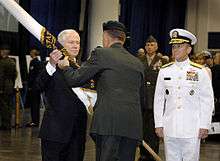
After four years of leading USSOCOM through the Iraq War and War in Afghanistan, President George W. Bush nominated Rear Admiral Eric T. Olson to succeed Brown as the commander of U.S. Special Operations Command on May 11, 2007.[30] Brown and Olson had served at the USSOCOM headquarters in Tampa together for four years, and Olson had been the deputy commander since 2003.[7] The change of command ceremony took place on July 9, 2007, at the Tampa Convention Center.[31] It was presided over by Secretary of Defense Robert Gates.[31] During the ceremony, Gates said, "He came to this post four years ago determined to improve the way special operators fight. He has done just that".[32] At the time of the change of command ceremony Brown was the longest serving commander in U.S. Special Operations Command history with 1,406 days in office. Over the course of his military career, Brown amassed a total of 4,400 hours of flight time in fixed and rotary-winged aircraft.[19]
Education
His military education included the Field Artillery Officer Advance Course, U.S. Army Command and General Staff College and the United States Army War College.[33][19] At the Army War College in 1992, a then-Lieutenant Colonel Brown co-wrote a military studies program with future United States Northern Command commander, Victor E. Renuart, Jr., in a paper titled Combat Search and Rescue: A Search for Tomorrow. In it, Brown was highly critical of the United States Air Force, saying, "The U.S. Air Force is the proponent agency for search and rescue, but chose not to deploy any forces to Desert Storm".[34] Brown graduated from the Harvard Executive Education Program's National and International Security Managers Course.[33][19][35] He received a bachelor's degree in history from Cameron University, as well as a master's degree in business from Webster University.[33][19][35]
Post-military life
In November 2007, shortly after Brown retired from the Army, he joined the board of directors for Aurora Flight Sciences,[19] which specializes in the scientific and military applications of robotic aircraft and aerospace vehicles.[19] Brown is the president and founder of his own consultation firm, Tier 4 Consulting.[5][36] He is an advisor to the Patriot Defense Group, LLC,a defense and intelligence contracting company that directly supports the training requirements of the defense and intelligence communities. He serves on the board of directors for the Special Operations Warrior Foundation,[12] and the board of directors for The Protective Group,[37] a company which specializes in developing composite armor for personnel, vehicles and aircraft.[38] He is a senior advisor to the CEO of Smith & Wesson.[5]
Awards and honors
General Brown was awarded the following military awards and decorations:
 |
 | |||||
 |
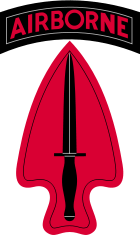 |
 | ||||
| |
 |
 | ||||
Other accolades
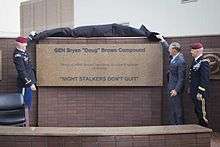
Shortly after his retirement, Brown was named "Patriot of the Year" for 2007 by the Congressional Medal of Honor Society, and he also received the Ellis Island Medal of Honor.[5][35] The following year, he was inducted into the Army Aviation Hall of Fame.[11][5] The Association of Special Operations Professionals named Brown "Man of the Year" in 2011.[4] In 2012, the 160th SOAR compound at Fort Campbell was renamed the "Gen. Bryan "Doug" Brown Compound" in his honor.[13][39]
In film
| Year | Title | Portrayal | Notes |
|---|---|---|---|
| 2010 | The Tillman Story | Himself | The documentary shows footage of Brown's testimony before the Committee on Oversight and Government Reform in 2007. |
Works by Brown
- Bryan D. Brown; Victor E. Renuart, Jr. (1992). Combat Search and Rescue: A Search for Tomorrow (PDF). Carlisle Barracks, Pennsylvania: United States Army War College. Retrieved May 16, 2013.
- Bryan D. Brown (2001). "The 160th SOAR: The Quiet Aviation Professionals". Special Warfare: The Professional Bulletin of the John F. Kennedy Special Warfare Center and School. John F. Kennedy Special Warfare Center and School. 14 (3): 2–4. Retrieved May 19, 2013.
- Bryan D. Brown (2006). "U.S. Special Operations Command: Meeting the Challenges of the 21st Century". 4 (40). Joint Force Quarterly.
See also
-
 Biography portal
Biography portal -
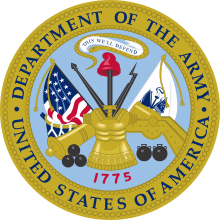 United States Army portal
United States Army portal
References
- ↑ Marquis Who's Who on the Web: Bryan Brown
- 1 2 3 4 5 Clark Cox (November 9, 2001). "Gen. Brown, Lipton to Speak". thepilot.com.
- ↑ "89th Infantry Division of World War II: June–August 2004 Newsletter". 89infdivww2.org. Retrieved May 17, 2013.
- 1 2 3 4 5 6 7 8 9 10 11 12 13 14 15 16 17 18 19 20 21 22 23 John D. Gresham (May 31, 2011). "A Warrior's Life: An Interview with Gen. Bryan "Doug" Brown, USA (Ret.)". Defense Media Network. Retrieved May 7, 2013.
- 1 2 3 4 5 6 7 "Securing America's Future Energy". Secureenergy.org. September 1, 2007. Retrieved May 17, 2013.
- ↑ Jim Garamone. "Military Pays Tribute to Special Warrior". American Forces Press Service. Retrieved September 5, 2014.
- 1 2 "First SEAL Tapped to Head SOCOM". Military.com. May 11, 2007. Retrieved May 7, 2013.
- 1 2 3 John D. Gresham (October 15, 2009). "General Bryan D. Brown Interview". Defense Media Network. Retrieved April 27, 2013.
- ↑ William R. Levesque (May 12, 2007). "Navy officer is selected to head SOCom". St. Petersburg Times. Retrieved May 14, 2013.
- 1 2 3 4 5 6 7 8 "DefenseLINK News: Bush Nominates Brown as Special Ops Commander". Osd.dtic.mil. June 23, 2003. Retrieved April 27, 2013.
- 1 2 3 4 5 6 7 8 9 "General Bryan D. Brown, Ret". Quad-a.org. Retrieved May 17, 2013.
- 1 2 3 "Board of Directors – Special Operations Warrior Foundation". Specialops.org. Retrieved May 17, 2013.
- 1 2 3 4 David Snow. "160th SOAR makes rare dedication – The Eagle Post : News". The Eagle Post. Retrieved May 17, 2013.
- ↑ Iran–U.S. Hostage Crisis (1979–1981)
- 1 2 Bowden, Mark, Guests of the Ayatollah: the first battle in America's war with militant Islam, Atlantic Monthly Press, (2006), p. 287
- 1 2 3 4 5 Histories of the US Army 160th Special Operations Aviation Regiment (Airborne) [SOAR], 1991–2001 25-January-2010
- 1 2 3 4 5 6 7 8 Major Sidney J. Gray III; CW5 Charles W. Weigandt (Summer 2001). "The 160th SOAR: 20 Years of Army Special-Operations Aviation". Special Warfare: The Professional Bulletin of the John F. Kennedy Special Warfare Center and School. Fort Bragg, North Carolina: U.S. Government Printing Office. 14 (3). Retrieved April 11, 2014.
- ↑ "NO HIGHER HONOR: Photos: Capture of the Iran Ajr". Navybook.com. Retrieved May 19, 2011.
- 1 2 3 4 5 6 7 "Former SOCOM Commander General Doug Brown Joins Aurora's Board of Directors" (PDF). Aurora Flight Sciences. November 5, 2007.
- ↑ "News Release: General Officer Announcement". Defense.gov. July 27, 2000. Retrieved April 27, 2013.
- ↑ "News Release: General Officer Announcements". Defense.gov. July 3, 2002. Retrieved April 27, 2013.
- 1 2 "Online NewsHour: Report – Rumsfeld Denies Part in Cover-Up". PBS. August 1, 2007. Retrieved May 14, 2013.
- ↑ Mary Tillman (August 8, 2010). "Pat Tillman's mother on Army Gen. Stanley McChrystal: I told you so – Los Angeles Times". Articles.latimes.com. Retrieved May 14, 2013.
- ↑ "Lt. General Philip Kensinger Called 'Responsible' in Pat Tillman Case – ABC News". Abcnews.go.com. March 24, 2007. Retrieved May 14, 2013.
- ↑ Priddy, Maj. Wade (2006). "Marine Detachment 1: Opening the door for a Marine force contribution to USSOCom". Marine Corps Gazette. Marine Corps Association. 90 (6): 58–59.
- ↑ "Quadrennial Defense Review site". Retrieved April 11, 2014.
- 1 2 Robert Martinage (2008). "Strategy for the Long Haul: Special Operations Forces Future Challenges and Opportunities". Center for Strategic and Budgetary Assessments: xiii.
- 1 2 3 Michèle A. Flournoy; Tammy S. Schultz (June 2007). "Shaping U.S. Ground Forces for the Future: Getting Expansion Right". Center for a New American Security.
- ↑ "2006 Quadrennial Defense Review Report" (PDF). February 6, 2006. Archived from the original (PDF) on October 28, 2012. Retrieved April 11, 2014.
- ↑ Ann Scott Tyson (May 11, 2007). "Olson Picked to Lead U.S. Special Operations Command". Washington Post. Retrieved May 19, 2007.
- 1 2 Mike Bottoms; Master Sgt. Laura LeBeau (July 22, 2007). "USSOCOM holds historic change of command". hurlburt.af.mil. Retrieved April 27, 2013.
- ↑ Jim Garamone (July 9, 2007). "Navy admiral takes helm of U.S. Special Ops command". Af.mil. Retrieved May 17, 2013.
- 1 2 3 "Q&A: General Bryan D. Brown". Kmimediagroup.com. September 11, 2001. Retrieved May 7, 2013.
- ↑ Bryan D. Brown; Victor E. Renuart, Jr. (1992), Combat Search and Rescue: A Search for Tomorrow (PDF), Carlisle Barracks, Pennsylvania: United States Army War College, retrieved May 16, 2013
- 1 2 3 "HKS Executive Education". Ksgexecprogram.harvard.edu. Retrieved May 17, 2013.
- ↑ Bryan Bender (December 27, 2010). "The 2007 class of retiring generals". Boston.com. Retrieved May 17, 2013.
- ↑ "The Protective Group, Inc.: Board of Directors – Businessweek". Investing.businessweek.com. Retrieved May 17, 2013.
- ↑ "The Protective Group". The Protective Group. Retrieved May 17, 2013.
- ↑ "160th SOAR (A) compound dedicated to former commander". Soc.mil. May 22, 2012. Retrieved May 17, 2013.
External links
![]() Media related to Bryan D. Brown at Wikimedia Commons
Media related to Bryan D. Brown at Wikimedia Commons
| Military offices | ||
|---|---|---|
| Preceded by Michael Canavan |
Commander of Joint Special Operations Command 1998–2000 |
Succeeded by Dell L. Dailey |
| Preceded by William Tangney |
Commander of United States Army Special Operations Command October 11, 2000 – August 29, 2002 |
Succeeded by Philip R. Kensinger, Jr. |
| Preceded by Charles R. Holland |
Commander of United States Special Operations Command September 2, 2003 – July 9, 2007 |
Succeeded by Eric T. Olson |